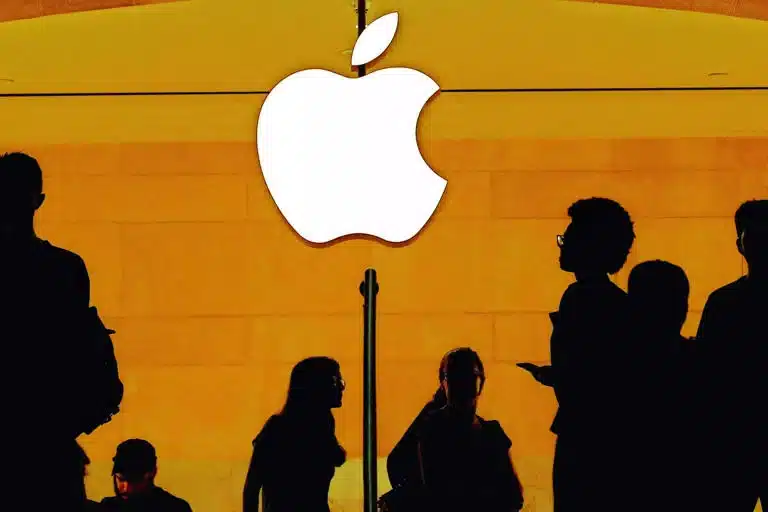Apple Faces Ongoing Tariff Challenges Amid Global Trade Tensions

Every iPhone proudly bears a label proclaiming its design origins in California, yet the reality is that the majority of these devices are manufactured in China. This dependency has come under scrutiny as U.S. tariffs on Chinese imports have surged, reaching as high as 245% on certain goods. Although Apple recently received a temporary reprieve from tariffs on electronics, the looming threat of additional tariffs raises questions about the future of its supply chain and its reliance on China, the world’s largest manufacturing hub.
China’s Role in Apple’s Success
China has played a pivotal role in Apple’s rise as a global technology leader. The company first entered the Chinese market in the 1990s, initially selling computers through third-party suppliers. By the late 1990s, as Apple faced financial difficulties, it found a lifeline in China’s burgeoning economy, which was opening up to foreign investment. This partnership allowed Apple to establish assembly lines in China, significantly boosting its production capabilities.
In 2001, Apple officially began manufacturing products in China, collaborating with Taiwanese manufacturer Foxconn. This partnership enabled Apple to produce iPods, iMacs, and eventually iPhones in a country that was rapidly becoming known as the “world’s factory.” Over the years, Apple has nurtured local suppliers, helping them evolve into key players in the manufacturing sector. For instance, Beijing Jingdiao transformed from a company that cut acrylic to a leading manufacturer of precision machinery used in advanced component production.
Apple’s first retail store opened in Beijing in 2008, coinciding with the Olympics and a peak in U.S.-China relations. The company quickly expanded its presence, establishing numerous stores across the country. As Apple’s profits soared, so did its manufacturing operations in China, with Foxconn operating the largest iPhone factory, often referred to as “iPhone City.” Today, a significant portion of Apple’s supply chain remains anchored in China, with many of its top suppliers maintaining factories there.
The Tariff Dilemma
The imposition of tariffs by the Trump administration has created a precarious situation for Apple. While the company managed to secure exemptions on certain tariffs during Trump’s first term, the current administration has signaled a tougher stance. The goal is to encourage American companies to shift production back to the U.S. Commerce Secretary Howard Lutnick has suggested that the manufacturing of devices like iPhones should return to American soil, a sentiment echoed by White House Press Secretary Karoline Leavitt.
However, experts are skeptical about the feasibility of such a shift. Eli Friedman, a former member of Apple’s academic advisory board, described the idea of relocating assembly operations to the U.S. as “pure fantasy.” He noted that while Apple has explored diversifying its supply chain since 2013, the U.S. has never been a viable option. Instead, the company has increasingly turned to countries like Vietnam and India for assembly, although the majority of its production still occurs in China.
Apple’s website claims its supply chain encompasses thousands of businesses across more than 50 countries, but the reality remains that China’s manufacturing capabilities are unmatched. The country continues to attract foreign manufacturers, including Foxconn, due to its established infrastructure and skilled workforce.
Future Challenges for Apple
As Apple navigates the complexities of U.S.-China relations, any significant changes to its supply chain could have dire consequences for both countries. China has long sought to be a manufacturing hub for Western companies, creating millions of jobs and gaining a competitive edge in global trade. The ongoing tensions between the two nations highlight the risks associated with such interdependence.
China has retaliated against U.S. tariffs by imposing its own levies on American imports, further complicating the situation. Additionally, the Chinese government has implemented export controls on critical materials, which could impact U.S. manufacturers. While the current tariff exemptions provide some relief, the uncertainty surrounding future tariffs remains a significant concern for Apple.
The company faces fierce competition from Chinese firms as the Chinese government pushes for advancements in technology manufacturing. Apple has lost its position as the leading smartphone seller in China to competitors like Huawei and Vivo. Economic challenges in China, coupled with restrictions on technology like Bluetooth and Airdrop, have further complicated Apple’s market position.
Despite announcing a substantial investment in the U.S., the future remains uncertain. Experts suggest that while the immediate crisis may have eased, Apple cannot afford to become complacent. The potential for new tariffs looms large, and the company must continue to adapt to the evolving landscape of international trade and manufacturing.
Observer Voice is the one stop site for National, International news, Sports, Editor’s Choice, Art/culture contents, Quotes and much more. We also cover historical contents. Historical contents includes World History, Indian History, and what happened today. The website also covers Entertainment across the India and World.

